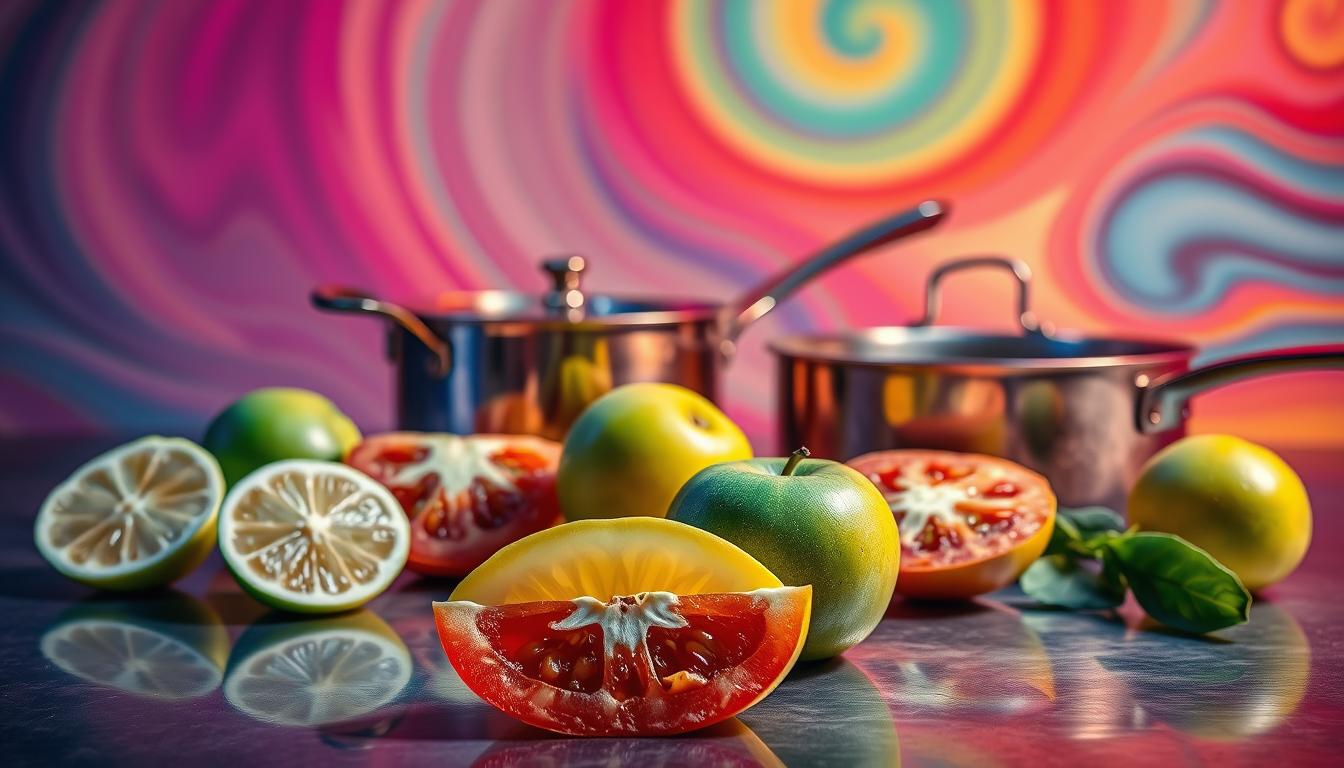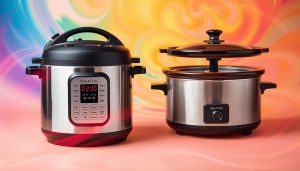Did you know your cookware could lose 40% of its lifespan when used improperly with citrus or tomato-based recipes? Chemical interactions between ingredients and kitchen tools shape everything from flavor profiles to equipment durability. Understanding these reactions transforms how you approach meal preparation.
When preparing dishes like marinara sauce or ceviche, acidic components trigger molecular changes in metal surfaces. This process can enhance flavors in some cases but degrade cookware coatings in others. The right pan or pot selection preserves both your equipment investment and food quality.
Modern cooking enthusiasts face unique challenges with today’s diverse material options. Stainless steel responds differently to vinegar than enameled cast iron, while aluminum requires special consideration for citrus-heavy dishes. These variations impact maintenance routines and recipe outcomes.
Key Takeaways
- Material composition determines cookware’s reaction to acidic ingredients
- Reactive metals can alter food flavors and leach into dishes
- Proper equipment selection preserves cookware integrity
- Chemical interactions affect both taste and equipment lifespan
- Non-reactive surfaces maintain food pH balance during preparation
- Regular maintenance prevents acid-related corrosion
Introduction to Acidic Interactions with Cookware
Ever wonder why your tomato sauce sometimes tastes metallic? Sour-tasting ingredients like citrus or vinegar work like culinary chemists, altering both your meal and equipment. These reactions occur at microscopic levels, especially when heat accelerates molecular exchanges between food and surfaces.

Understanding the Science Behind Acid Reactions
Low pH foods trigger ion transfer when contacting reactive metals. For example, aluminum pans release particles into lemon-based sauces, changing flavor and surface integrity. Stainless steel resists this better but may still discolor with prolonged exposure to tomatoes.
Protein-rich meats showcase another layer. Acidic marinades unwind muscle fibers through denaturation. While this tenderizes your steak, it also increases contact time between reactive ingredients and cookware. Balancing marination duration prevents excessive material wear.
Why Acidic Foods Matter in Your Kitchen
Common cooking staples like wine or crushed tomatoes pack more acidity than you’d expect. Extended simmering in copper pots can leach toxic compounds, while cast iron may add iron flavors to delicate sauces. Non-reactive alternatives like enameled ceramic preserve taste and equipment.
Quick cooking hacks help minimize risks. Reduce vinegar before adding other liquids, or use glass bowls for citrus marinades. These adjustments protect your tools while maintaining recipe quality—a win-win for flavor-focused chefs.
How Acids React with Cookware
Your favorite chili recipe could be secretly altering your kitchen tools. Material science determines whether your cookware becomes a culinary ally or a flavor-wrecking foe. Two key processes dominate these interactions: acid-base reactions and carbonization.

Chemical Mechanisms: Acid-Base and Carbonization
When acidic foods meet reactive metals, electrons start swapping. This creates metal oxides that can flake into your sauce. Cast iron pans demonstrate carbonization best—heating oils past their smoke point forms a carbon-rich shield.
Proper seasoning uses unsaturated fats like flaxseed oil. These create durable polymer layers through thermal breakdown. This protective barrier stops citric acid from reaching raw iron beneath.
Reactions in Different Cookware Materials
Stainless steel resists corrosion because chromium forms an invisible oxide shield. Aluminum pans lack this defense—tomato sauce can pit their surface within hours. Always check if your cookware specifies “nonreactive” before simmering lemony dishes.
Unlined copper pots pose unique risks. They release toxic compounds when paired with vinegar-based marinades. Seasoned cast iron works for brief acidic tasks, but prolonged exposure strips its carbonized armor.
Your pan’s lifespan depends on understanding these reactions. Choose stainless steel for long simmers and enameled pieces for citrus-heavy recipes. Store-bought nonstick coatings require extra care—high heat degrades them faster when acids are present.
Practical Tips for Maintaining Your Cookware
Protecting your kitchen investments starts with smart material choices and maintenance habits. The right approach keeps cookware performing optimally for years while preserving food quality.
Selecting Non-Reactive and High-Quality Cookware
Prioritize materials with built-in corrosion resistance. High-grade stainless steel (18/10 grade) contains 18% chromium for oxide layer formation. This shields your pan from tomato sauces and citrus juices.
- Enameled cast iron resists acidic reactions but requires gentle handling
- Anodized aluminum prevents leaching but needs replacement when scratched
- Glass and ceramic options work best for long simmers
Proper Cleaning and Care Techniques
Act quickly after cooking acidic foods. Soak stainless steel pans briefly in warm soapy water. Avoid abrasive pads that scratch protective layers.
“Treat your non-stick surfaces like fine china—gentle sponges only.”
For cast iron, dry thoroughly and apply thin oil layers. Store pots with protective liners between stacked pieces. Replace any cookware showing pitting or coating cracks.
Rotate your kitchen tools based on use frequency. Reserve aluminum pans for quick tasks and stainless steel for extended simmering. This strategy maximizes equipment lifespan while maintaining food safety standards.
Conclusion
Transforming your kitchen starts with mastering material science. High-quality cookware serves as your foundation, offering consistent performance across decades of use. Premium pieces eliminate hot spots and resist wear from frequent cooking sessions, especially when handling citrus or tomato-based dishes.
Always consult manufacturer guidelines for temperature limits and care instructions. This ensures your pans and pots maintain their protective layers against acidic ingredients. Proper maintenance routines preserve surfaces, whether you’re searing meats or simmering sauces.
The right equipment choices today prevent costly replacements tomorrow. Non-reactive materials like enameled cast iron or stainless steel safeguard both your meals and kitchen investments. As cookware technology advances, staying informed about new developments ensures you’ll always have the best tools for flavor-focused results.
Your upgraded understanding of material interactions empowers smarter decisions. Pair this knowledge with regular equipment checks, and you’ll enjoy professional-grade outcomes in every home-cooked meal.



